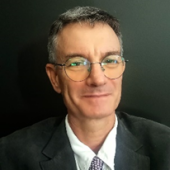
Global and regional perspectives on seaweed mariculture: lessons for the Asian region
Simon Funge-Smith, Senior Fishery Officer, FAO Regional Office for Asia and the Pacific, Thailand

Global and regional perspectives on seaweed mariculture: lessons for the Asian region
Simon Funge-Smith, Senior Fishery Officer, FAO Regional Office for Asia and the Pacific, Thailand
About the speaker:
Simon Funge-Smith, is currently the Senior Fishery Officer at the Asia and Pacific Regional Office of the UN Food and Agriculture Organization. With responsibility for coordinating FAO’s regional programme on fisheries and aquaculture, his work covers the valuation and assessment of the role and importance of the regional capture fisheries and aquaculture. Simon Funge-Smith’s professional career spans both fisheries and aquaculture development, with more than 30 years of experience working in Asia.
Presentation:
An overview of the production of seaweed in Asia. The presentation will cover current production, the uses of seaweed and species under production, and current uses. It will speak to the need to address governance, trade and social challenges and this requires effective development frameworks and standards. The presentation will also cover the opportunities and challenges for its further development as a major mariculture commodity.
Interview:
1) When was the first time you got involved with seaweeds and why?
I started working with Graciliaria in Thailand in 1992 as part of experimental work for remediation of shrimp farm effluents. It was astounding how well the seaweed cleared water of suspended solids and nutrients. Gorth rates were excellent too. However, it was clear that there needed to be substantial re-engineering of the pond and culture line systems to make this an effective way of treating effluent water and this was simply not viable at the time. Things have changed and is now a viable option, especially for recirculating farms.
2) What is your view on the Asia-Pacific seaweed industry in 2030?
Itis dominated by small-sized producers and we have yet to move away from shore to larger industrial systems. There is potential, but significant work to be done to transition to larger scale industrial systems that are going to be economically viable. Medium scale seems most likely in the interim but the expansion of the market beyond food and phycocolloids will be an exciting development.
3) What will you be talking about at Seagriculture Asia-Pacific 2023?
My presentation will cover Global and regional perspectives on seaweed mariculture and what may be learned for the context of the Asian region